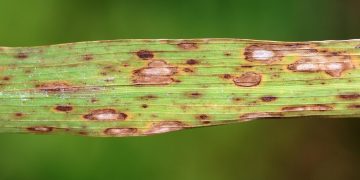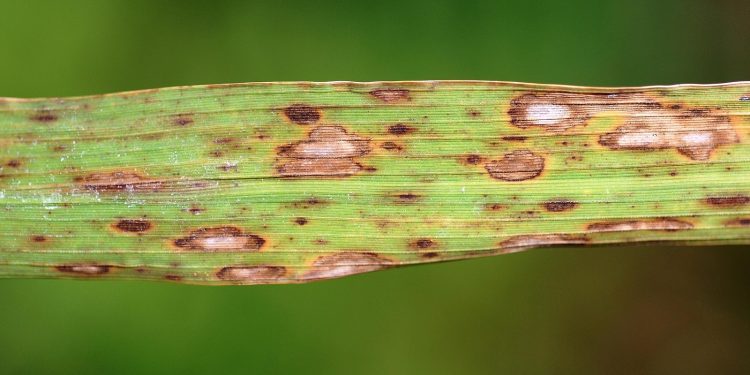#BrownSpot #PseudocercosporellaCapsellae #FungalDisease #CropManagement #PlantPathology #Agriculture #Sustainability
Pseudocercosporella capsellae is a fungal disease that causes brown spots on various plant species, including arugula, cabbage, and kale. The disease is characterized by the appearance of small, circular brown spots on the leaves, which can eventually lead to the leaves dying off. If left untreated, Pseudocercosporella capsellae can cause significant damage to crops and reduce yields.
The development of Pseudocercosporella capsellae is favored by warm and humid conditions, which provide optimal conditions for fungal growth and spread. The disease is primarily spread through water, wind, and infected plant debris, making it difficult to control once it has taken hold.
Farmers and agricultural researchers have been working to develop effective strategies for managing Pseudocercosporella capsellae. One approach is to rotate crops and avoid planting susceptible species in the same field for consecutive years. Additionally, using resistant plant varieties and implementing good crop management practices such as adequate irrigation and fertilization can help prevent the development of the disease.
The consequences of not effectively managing Pseudocercosporella capsellae can be severe. In addition to reducing crop yields, the disease can lead to food shortages and economic losses for farmers. Furthermore, the use of fungicides to control the disease can have negative environmental impacts and may not be economically feasible for small-scale farmers.
Pseudocercosporella capsellae is a fungal disease that poses a significant threat to crops such as arugula, cabbage, and kale. To effectively manage the disease, farmers and agricultural researchers must continue to develop and implement effective strategies that are both economically feasible and environmentally sustainable.































